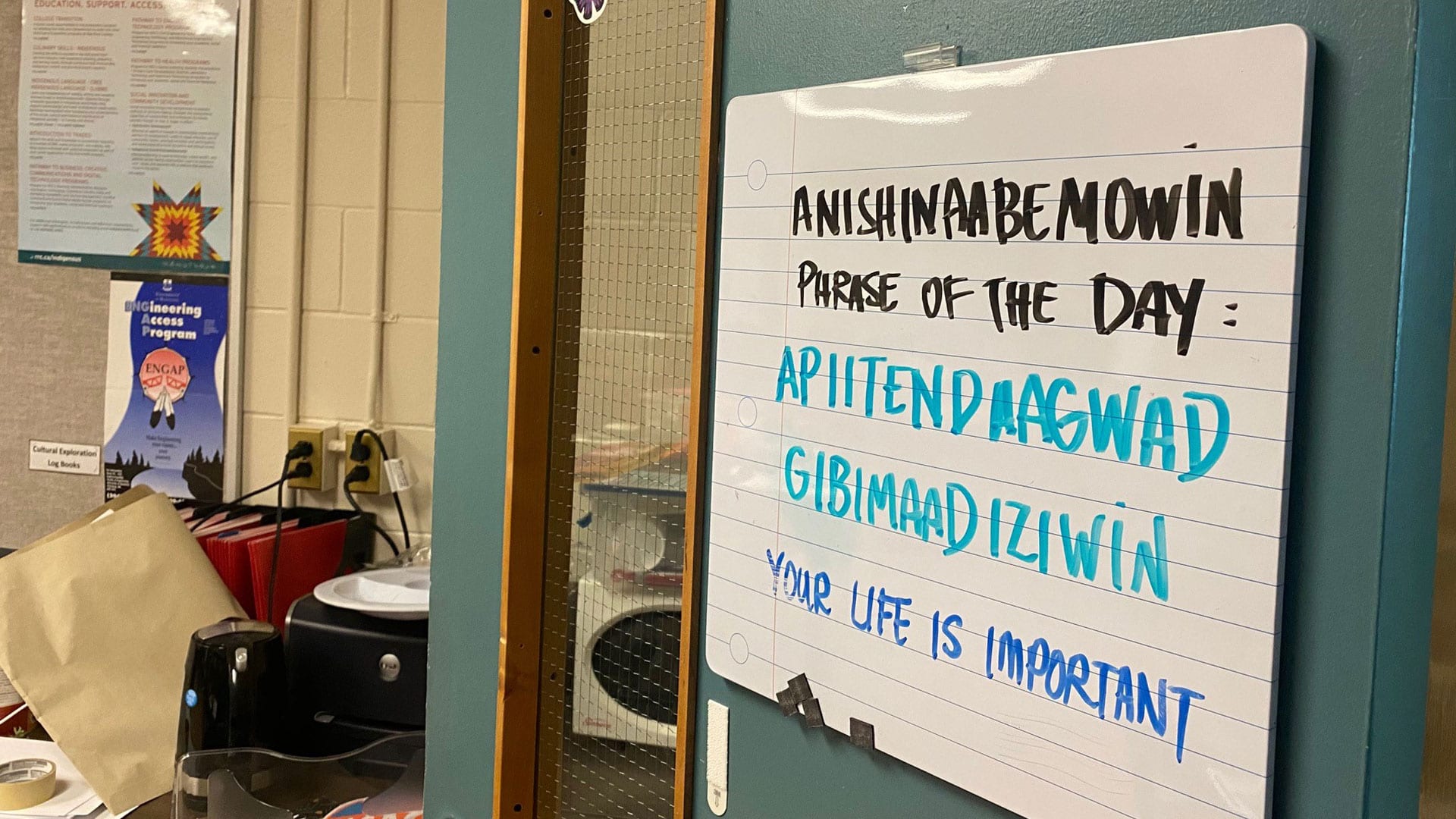The largest school division in Winnipeg is steadily working to increase the rates of Indigenous high school graduates through a number of initiatives in and out of the classroom – and they have their sights on increasing post-secondary rates as well.
The Winnipeg School Division (WSD) is home to the largest Indigenous student population in the city with about 28 per cent of the student self-identifying as First Nations, Inuit or Métis.
In Manitoba “on time” high school graduation rates for Indigenous students sit at 50 per cent compared to approximately 90 per cent for non-Indigenous students, according to the province.
For some students like Rainey Raven the rite of passage that is graduating from high school does not always seem within reach.
“I’m surprised I’ve made it this far,” Raven told APTN News. “I’ve had a rough couple of years so even getting this far to graduate it’s been kind of a surprise.”
There are a number of reasons why a student may not graduate on time but the WSD hopes to change these numbers with a variety of programs including Indigenous grad coaches and literacy supports.
“We’re seeing big engagement with Indigenous students,” said Rob Riel, director of Indigenous education for the school division.
The division adopted an Indigenous education policy in 1996, which was revised in 2005.
It offers Cree and Ojibwe language classes at two of their schools, and Indigenous education initiatives are woven throughout the curriculum beginning at nursery.
But the division doesn’t want student success to end there.
“We’re really pushing that post-secondary is important, and dream big and you can make it. That’s the message we’ve been doing with all of our students in all of our schools,” said Riel.

One of those schools is St. John’s High School in the city’s North End.
In the past three years the school has seen a 35 per cent increase of students attending post-secondary.
“They’re really setting their sights where they should be and furthering one’s education,” said Doug Taylor, principal at St John’s.
Taylor said the school has seen an influx of donors offer scholarships over the past few years.
In an area of the city where a household can make below the average income for the city, scholarships and grants came open some doors for graduates.
Jewles Morrissette is Métis and one of the students up for a scholarship.
He won’t find out for a couple of weeks whether he gets it, but the 17-year-old is planning on going to the University of Winnipeg and the scholarship will help relieve some of the financial burden after his father was laid off from one of his jobs.
“I’d be the first one in my family to go to post-secondary. I have siblings who have specials needs and mental illness so knowing that I’m going to do something for my family makes me feel good about myself,” said Morrissette.

Cheryse Zastre is another student who will the first in her family to go on to post-secondary.
The 17-year-old, who is still learning about her heritage, is planning on going to Red River College to become a social worker.
“[My] family has a cycle of not graduating, drop outs, stuff like that. I just kind of want to break that, and I want to be successful in a way that not only benefits me but other people,” said Zastre.
Taylor said the culture is changing at St. John’s and it’s bettering the school and community.
“Students now more than they’ve ever done before talked about what are they going to do after high school. That necessarily wasn’t always the case at our school.”
Another reason for this is the Build from Within program.
Launched in 2018, the program identifies youth who are interested in becoming teachers and trains them throughout high school into university.
Part of the program includes tuition to the University of Winnipeg.
“I think it’s vital that we have this program because it has nothing to do with ability. These students are bright, smart and super intelligent. It’s more about giving them…support for [them] to be successful in their university,” said Riel.
Raven, who is First Nations, is one of the students enrolled in the program. She said the financial component of it has made it possible to attend post-secondary.
“It really took a big weight off my shoulders,” she said.
Kailynn Kopychanski, who is Métis, is also a part of the program. She said the best part has been all the support she’s received from other students and teachers.
“In this program you’re supported through everything. Lots of people didn’t know how to apply for their Treaty card or Métis card and we were supported through that or even applying for university we were supported through that also,” she said.
Having a support system has been key for a lot of these students, said Riel.
He adds part of the students’ journey also takes place outside the classroom with some learning more about their heritage and embracing it.









